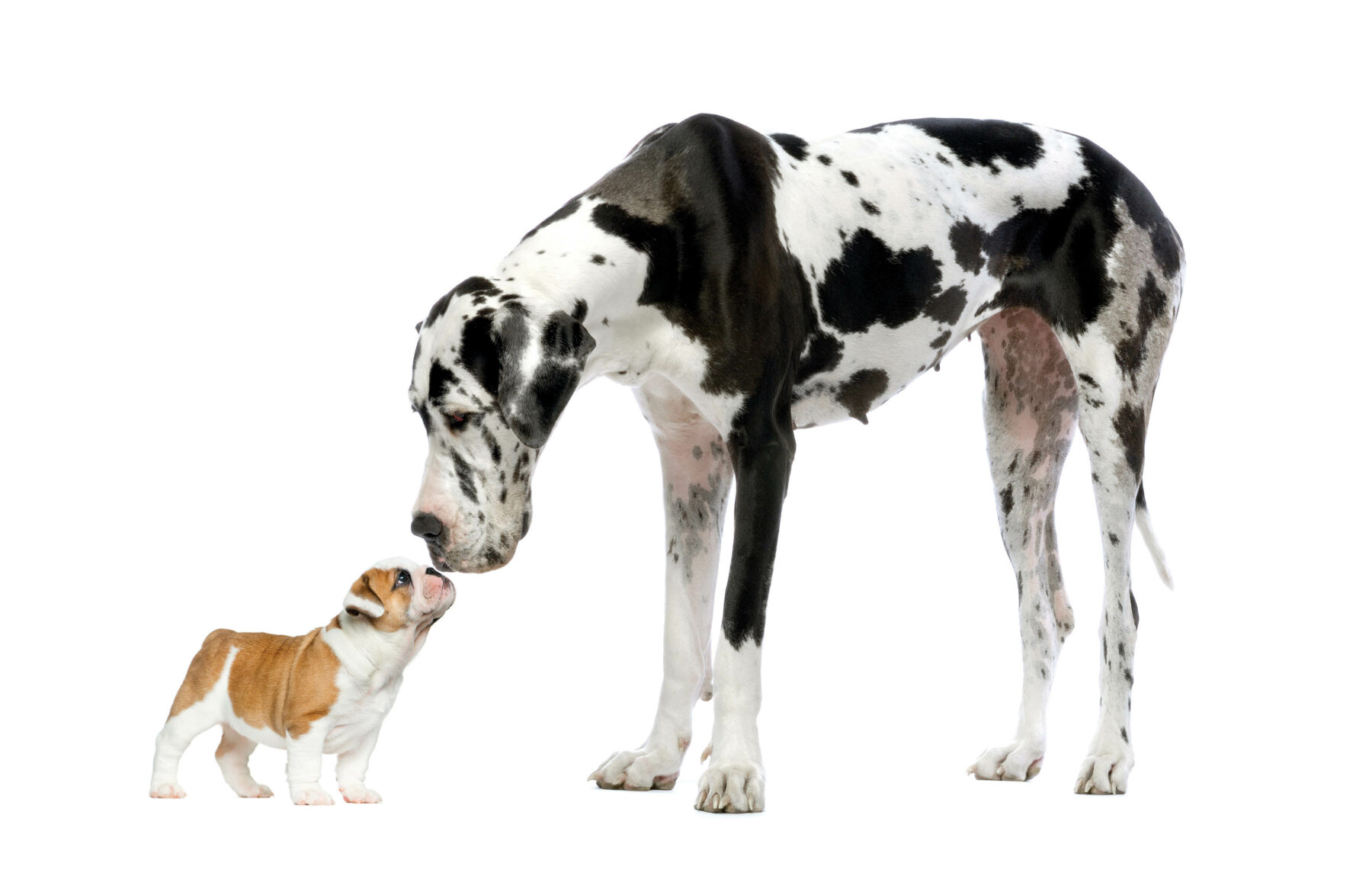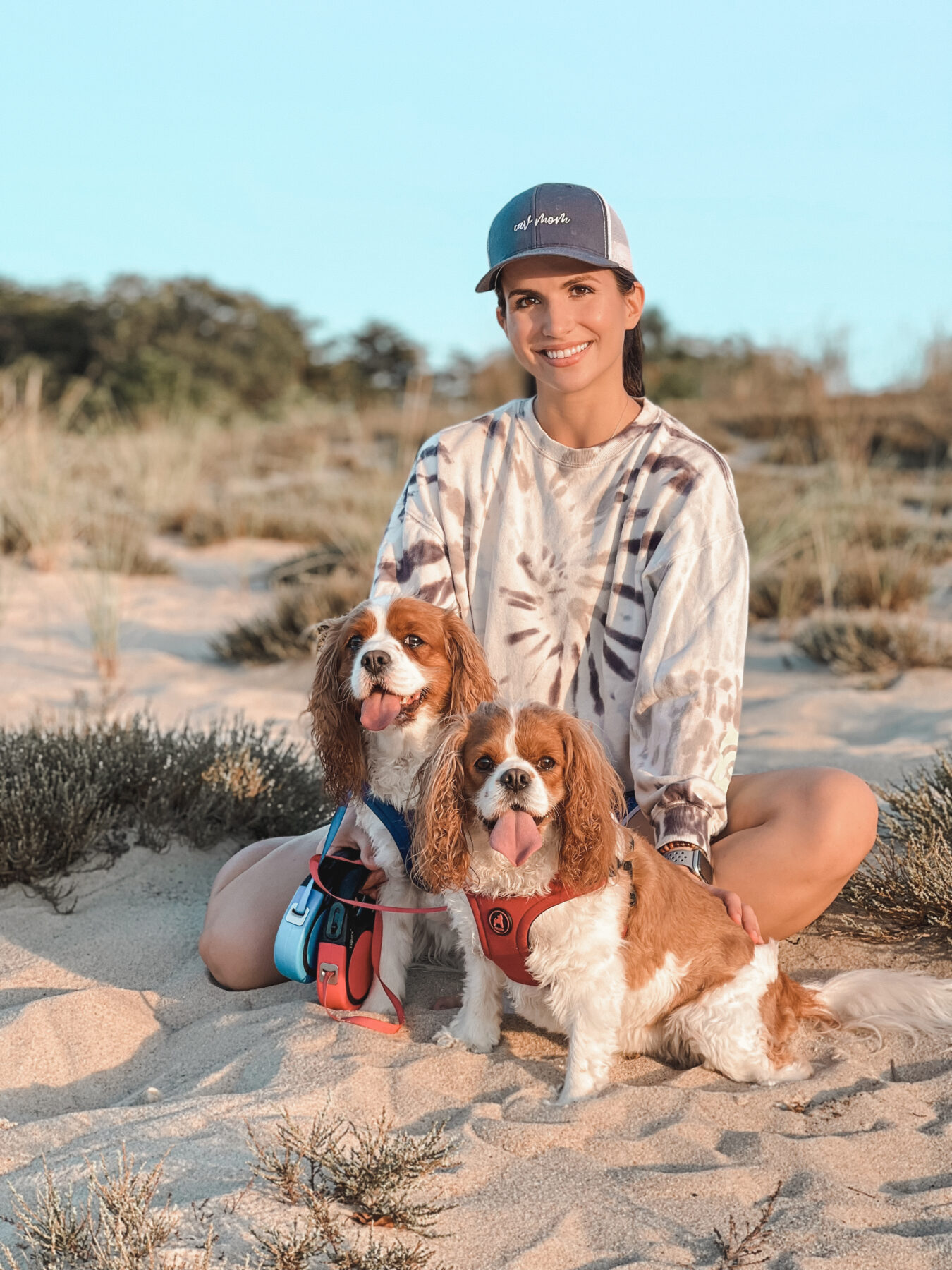Approaching Fitness With Small & Large Dogs

The size debate continues — which dogs are better, small or large pups?
Regardless of your answer, understanding their differences in relation to fitness can help you best care for your pup. Small and large dogs have different needs and capabilities; what works for one may not work for the other, and there are different ways to approach exercise with each.
With these tips, you and your pup can pursue an active lifestyle together. So, grab that leash, and let’s get started!
Fitness Dos With Small Dogs:
- Go for a walk or run: Small dogs may have smaller legs, but they still need exercise to keep them fit. Going for a walk or run can help them burn off excess energy, maintain a healthy weight and improve overall cardiovascular health.
- Try agility training: Small dogs have a lot of energy and need to be mentally and physically stimulated. Agility training is an excellent way to do this, and you can set it up in your backyard or even indoors since you have a little pup!
- Play interactive games: Playing interactive games with your small dog can be a great way to keep them entertained. This can include puzzle toys, treat dispenser balls and snuffle mats. Playing games with a small dog doesn’t require a large space, so you can play anytime!
Fitness Don’ts With Small Dogs:
- Avoid intense exercise: Small dogs have smaller bodies, so they may not be able to handle the same level of intensity as larger dogs. Avoid activities that put too much strain on them, such as long runs or jumping from high surfaces.
- Don’t overdo it during an exercise session: Small dogs’ bodies can grow tired more quickly than larger dogs, so it’s important to monitor their energy levels during exercise and not push them beyond their limits. Start with shorter sessions and gradually increase the duration and intensity as they build up their endurance. Also, make sure they get adequate rest and recovery time between workouts to prevent injury and exhaustion.
- Avoid too hot or cold weather: Small dogs are more sensitive to extreme weather than larger dogs. Avoid exercising in extreme heat or cold to prevent them from overheating or freezing.
Fitness Dos With Large Dogs:
- Take them on long walks or runs: Large dogs have a lot of energy and can handle longer walks and runs than small dogs. Find a trail you want to explore and enjoy your extended walk!
- Play fetch: Playing fetch with a larger ball or toy is an excellent way for your large dog to burn off excess energy and improve overall cardiovascular health. An open field is ideal for this activity, allowing your dog to run freely and get a full-body workout.
- Go swimming: Large dogs can benefit from swimming as it provides a low-impact workout that’s easy on their joints. However, it’s important to always supervise your dog and use a life jacket if necessary to ensure their safety.
Fitness Don’ts With Large Dogs:
- Don’t exercise right after eating: Large dogs have big appetites and may consume more food, but they need time to digest before engaging in physical activity. Exercising too soon after eating can put unnecessary strain on their digestive system and increase the risk of an upset stomach. Try waiting at least an hour after a meal before working out to ensure they’re not feeling bloated.
- Don’t go too far, too fast: Large dogs have large bodies that need time to adapt to physical activity. Start with shorter distances and lower intensities and gradually increase as your dog’s fitness level improves. Going too far, too fast can strain their muscles and bones and increase the risk of injury.
- Don’t let them pull on the leash: Large dogs are typically stronger than small dogs and may try to pull the leash while walking or running. This can strain their neck and spine and can be dangerous when out of control. Train your large dog to loose-leash walk, and use a harness to prevent pulling.
When it comes to fitness, every dog is different. Take into account your dog’s size, age and overall health when deciding on a workout routine to begin together. Plus, your dog has unique preferences! Remember — not all dogs are created equal.
About the Author

Stephanie Thomas, CPT is a certified personal trainer, health coach and yoga teacher living in Annapolis, Maryland. As the founder of Stephanie Thomas Fitness and creator of The Bridal Body Workout Guide, she helps brides develop healthy habits and a well-rounded workout routine they’re obsessed with. When she’s not creating workouts for her clients, you can find Thomas reading the latest health book, spending time in nature or taking a walk with her two cavalier pups. You can grab her free Bridal Arms Mini Guide and sign up for her free wellness newsletter (featuring fun freebies!) on her website.






